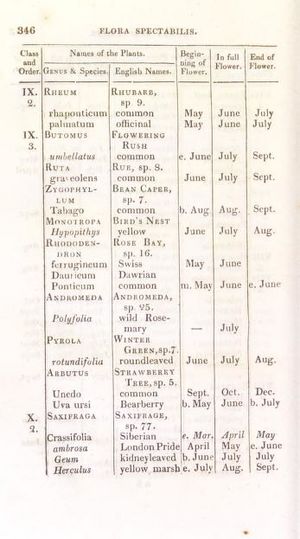Thomas Furly Forster facts for kids
Quick facts for kids
Thomas Furly Forster
|
|
|---|---|
| Born | 5 October 1761 Walbrook, London, England
|
| Died | 28 October 1825 (aged 64) Walthamstow, London, England
|
| Spouse(s) |
Susanna Williams
(m. 1788) |
| Children | 5, including Thomas Ignatius Maria Forster |
| Parent(s) |
|
| Relatives |
|
| Scientific career | |
| Fields | Botany |
| Author abbrev. (botany) | T.F.Forst. |
Thomas Furly Forster (born September 5, 1761 – died October 28, 1825) was an English botanist. A botanist is a scientist who studies plants. He was also a Fellow of the Linnean Society (FLS), which is a group for people interested in natural history.
Contents
Life of Thomas Furly Forster
Thomas Furly Forster was born in London, England, in 1761. His father, Edward Forster the Elder, raised him with ideas from a famous thinker named Jean-Jacques Rousseau. Thomas also learned to love old things, coins, pictures, and plants from his uncle, Benjamin Forster.
Early Interests in Plants
Thomas became very interested in plants. He learned about the Linnean system of classification, which is a way to group and name plants and animals. Many other plant experts, like Sir John Cullum and Richard Warner, also helped him with his studies.
Growing Plants and Helping Others
Thomas was one of the first members of the Linnean Society, a group for natural history lovers. He often visited Tunbridge Wells, a town known for its natural beauty. From 1796 to 1823, he lived in Clapton. He had already grown tough plants at his home in Walthamstow. Later, he focused on growing plants that needed a greenhouse. He even helped the Loddiges family start their plant nursery in Hackney. A nursery is a place where plants are grown and sold.
Working for a Good Cause
In 1823, Thomas and his brother Benjamin joined the committee of the Anti-Slavery Society. This group worked to end slavery. Thomas moved back to Walthamstow after his mother passed away and died there in 1825. He was part of many science and charity groups. He was friends with many important botanists, including Sir Joseph Banks and Robert Brown.
His Legacy in Botany
Thomas Furly Forster was honored when a plant, Sedum fosterianum, was named after him. This shows how important his work was in the world of plants.
Thomas Forster's Works and Discoveries
Thomas Forster spent many years drawing plants. Between 1775 and 1782, he drew many different kinds of plants, including some exotic ones from a garden in Hackney.
Plant Lists and Books
Thomas and his brothers helped create lists of plants for different areas in a book called Camden (1789). He also wrote articles about plants for famous magazines like the Botanical Magazine. Around 1800, he made a list of rare plants found in Tunbridge Wells. In 1816, he published a book called Flora Tonbrigensis, which was all about the plants of that area. His son later re-released this book in 1842.
Other Contributions
Even though he loved animals, Thomas did not want to write about them. He contributed two papers to the Linnean Society's Transactions. He also left behind a large collection of dried plants, called a hortus siccus, which included both flowering plants and algae. He also collected fossils, music, and made over a thousand drawings of old buildings. His son published his notes on nature and weather in 1827 as The Pocket Encyclopædia of Natural Phenomena.
Family Life
In 1788, Thomas Forster married Susanna Williams. They had two sons and three daughters. One of his sons, Thomas Ignatius Maria Forster, also became a well-known botanist.


